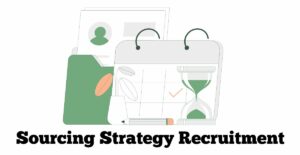Payroll can be a tricky thing. Even seasoned HR professionals make mistakes when it comes to payroll management. However, we cannot underestimate the importance of doing it correctly. A mistake or miscalculation in your employee’s paycheck can create real issues for that employee beyond the obvious inconvenience of not having money on hand to pay bills and buy essentials. It could also have tax and other negative implications for the employee and your company.
In addition to being something we see daily, payroll is one of most businesses’ trickiest aspects of human resources management. There aren’t many simple things in life, but payroll is one of them if you know what you’re doing! In this post, we’ll discuss how to keep your company’s payroll process organized, orderly, and efficient so that you won’t have to stress about it later on down the road. Read on to learn more about practical tips for operating a successful payroll system as an HR professional or new HR generalist.
Here we have a few payroll tips for you

Basic Payroll Tips – How your payroll operates
The first step is to learn the basics of how your payroll operates. If you’re new to HR, this will likely be a challenging task. You’ll need to research and study the policies and procedures of your organization to understand how they work. Understanding your employees’ benefits and figuring out their salaries is a big element of the payroll process. Understanding these key components will help you better serve your company’s human resource needs. Additionally, you can get help from someone with payroll experience to get up to speed on all that you need to do.
Pay attention to tax deductions and obligations.
If you are a small business, you likely don’t have an HR department and are in charge of administering your payroll. There are many things to keep track of when paying employees. Still, one of the most important elements is ensuring employees are not being overpaid and not eligible for benefits they do not need. It is also important to ensure you withhold taxes from employee paychecks according to central and state tax laws. You could face penalties and lawsuits if you do not withhold taxes on time.
Be diligent with timestamps and accuracy.
You must carefully document all the relevant times and dates to run your payroll system smoothly.
It will include recording the start and ends of your employee’s workday, leaves and breaks. Sometimes employees use all their paid time off and need to take more time off afterwards. In that case, you must account for that in your record. You must understand that even a few payroll mistakes can result in costly consequences. So you must double-check your data before submitting it to payroll processing or payroll management.
Be transparent with employees about pay and deductions
Being transparent about how your company’s payroll works is key to success. Be upfront with your employees about payroll aspects, so they don’t feel their company is taking advantage of them. It includes explaining how much you will pay them, which deductions you will make, and why those deductions are necessary. Employees can be resentful and refuse to cooperate if you fail to provide information about what is happening with their paychecks. It is also helpful to explain how each employee will experience different pay periods and payment schedules since these vary depending on several factors. This step will help your employees anticipate changes and plan for them in advance, so there will be no surprises or unexpected issues when it comes time to collect paychecks.
Make use of automation where you can
The first step in running an effective payroll system is to use automation where you can. Automating your employee’s attendance and leave management process and linking the same with payroll management will give you ample free time to focus on other aspects of running a business. Plus, when processes are automated, they have the potential to run more smoothly. For example, suppose you’re using Kredily’s HR and Payroll software, which offers features like mobile geo attendance, leave management, payroll management, and integrated benefits information. In that case, you don’t have to worry about employees not being paid on time or processing payroll taxes manually. As an HR professional or new HR generalist, automating these processes will help you manage your responsibilities more effectively.
Conclusion
Learning how to manage payroll for your business can seem daunting, but it doesn’t have to be.
Keeping track of employee time, keeping tabs on payroll taxes, and ensuring employees are fairly compensated can be challenging. But with the right knowledge and processes in place, running an effective payroll doesn’t have to be so frightening. The method of administering payroll is challenging for any organization. If you operate a small business, you likely have many different tasks on your plate at any given moment. However, keeping human resource operations streamlined is essential if you want to keep your company operating efficiently and effectively.
These payroll tips will do wonders for your business.


